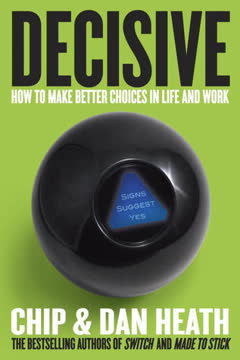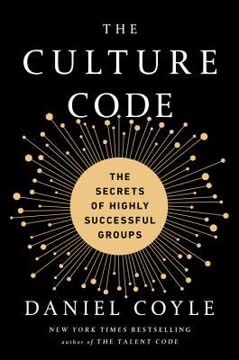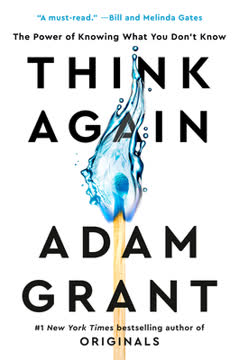Key Takeaways
1. Givers, Takers, and Matchers: Understanding Reciprocity Styles
"Givers, takers, and matchers all can—and do—achieve success. But there's something distinctive that happens when givers succeed: it spreads and cascades."
Three reciprocity styles. People generally fall into one of three categories in their approach to professional interactions:
- Givers: Focused on others' needs, contribute without expecting anything in return
- Takers: Prioritize their own interests, seek to gain more than they give
- Matchers: Strive for equal exchange, giving and taking in balanced proportions
Impact on success. While all styles can lead to success, givers have a unique potential for widespread impact:
- Takers may achieve short-term gains but often burn bridges
- Matchers maintain equilibrium but limit their network growth
- Givers create ripple effects, elevating those around them and building lasting relationships
Misconceptions about giving. Many assume givers finish last, but research shows:
- Givers are overrepresented at both the bottom and top of success ladders
- Successful givers develop strategies to avoid exploitation while maintaining their generous nature
2. The Surprising Success of Givers: How Generosity Leads to Achievement
"Being a giver is not good for a 100-yard dash, but it's valuable in a marathon."
Long-term perspective. Givers' success often unfolds over time:
- Initial sacrifices may seem detrimental in the short term
- Benefits accumulate through building trust, reputation, and relationships
- Givers create expanding networks of support and opportunity
Psychological advantages. Giving cultivates positive traits that contribute to success:
- Increased empathy and perspective-taking abilities
- Enhanced problem-solving skills through diverse collaborations
- Greater resilience and adaptability in face of challenges
Real-world examples. Successful givers across various fields demonstrate the power of generosity:
- Abraham Lincoln's political rise through consistent giving and collaboration
- Adam Rifkin's network-building through "five-minute favors"
- David Hornik's success as a venture capitalist by prioritizing entrepreneurs' needs
3. Building Powerful Networks: The Giver's Advantage in Connections
"By giving more than they get, givers build deeper and broader networks that often lead to greater opportunities."
Network expansion. Givers naturally create larger, more diverse networks:
- Willingness to help without expectation attracts diverse connections
- Reputation for generosity leads to more introductions and opportunities
- Ability to reconnect with "dormant ties" provides access to new resources
Quality of connections. Giver networks tend to be stronger and more supportive:
- Trust-based relationships lead to more meaningful exchanges
- Reciprocity from past giving creates a reservoir of goodwill
- Diverse network provides access to varied skills and knowledge
Strategies for network building:
- Practice "five-minute favors" - small acts of giving that require minimal time
- Actively reconnect with dormant ties to revitalize old relationships
- Focus on adding value to others rather than immediate personal gain
4. Collaboration and Credit: How Givers Elevate Team Performance
"When givers succeed, it spreads and cascades. When takers win, there's usually someone else who loses."
Enhancing team dynamics. Givers create positive collaborative environments:
- Foster psychological safety, encouraging open communication and creativity
- Elevate team performance by sharing knowledge and resources freely
- Inspire reciprocal giving among team members
Credit distribution. Givers' approach to credit impacts team success:
- Willingness to share credit builds trust and motivation
- Recognizing others' contributions encourages future collaboration
- Avoiding credit-hogging prevents resentment and competition
Case study: George Meyer and The Simpsons. The success of comedy writer George Meyer illustrates the giver advantage:
- Consistently contributed ideas without demanding credit
- Created an environment where others felt comfortable sharing
- Elevated the overall quality of the show through collaborative giving
5. Discovering Hidden Potential: The Giver's Approach to Talent Development
"Givers don't wait for signs of potential. Because they tend to be trusting and optimistic about other people's intentions, in their roles as leaders, managers, and mentors, givers are inclined to see the potential in everyone."
Recognizing potential. Givers excel at identifying and nurturing talent:
- Focus on motivation and effort rather than just raw ability
- Provide opportunities for growth and development
- Believe in the capacity for improvement in others
Strategies for talent development:
- Create psychological safety to encourage risk-taking and learning
- Offer specific, constructive feedback to promote growth
- Provide challenging assignments that stretch abilities
Real-world impact. Examples of givers' talent development success:
- C.J. Skender's approach to teaching accounting, producing top performers
- Stu Inman's talent scouting in the NBA, finding "diamonds in the rough"
- Mentors who see potential in unconventional candidates and help them succeed
6. The Power of Powerless Communication: Influence Through Humility
"Takers tend to worry that revealing weaknesses will compromise their dominance and authority. Givers are much more comfortable expressing vulnerability: they're interested in helping others, not gaining power over them, so they're not afraid of exposing chinks in their armor."
Counterintuitive influence. Powerless communication can be more effective than dominance:
- Expressing vulnerability builds trust and rapport
- Asking questions and seeking advice engages others and shows respect
- Tentative language allows for collaborative problem-solving
Strategies for powerless communication:
- Use hesitations, hedges, and disclaimers to soften assertive statements
- Practice asking more questions and actively listening to responses
- Share personal weaknesses or mistakes to create connections
Applications across domains:
- Sales: Building trust through genuine interest in customer needs
- Negotiation: Creating value through understanding others' perspectives
- Leadership: Inspiring followership through humility and openness
7. Avoiding Burnout: Sustainable Giving Strategies for Long-Term Success
"Selfless giving, in the absence of self-preservation instincts, easily becomes overwhelming."
Balancing giving and self-care. Successful givers maintain their energy and motivation:
- Recognize the importance of personal well-being
- Set boundaries to prevent exploitation
- Engage in "otherish" giving that benefits both self and others
Strategies for sustainable giving:
- Chunk giving into dedicated time blocks rather than constant availability
- Focus on high-impact activities that align with personal values and skills
- Seek support and reciprocity from a network of fellow givers
Importance of impact. Seeing the results of giving prevents burnout:
- Connect with beneficiaries to understand the impact of contributions
- Celebrate small wins and progress toward larger goals
- Reflect on the ripple effects of giving beyond immediate recipients
8. Overcoming the Doormat Effect: Balancing Generosity with Self-Interest
"Givers need to be otherish: they care about benefiting others, but they also have ambitious goals for advancing their own interests."
Avoiding exploitation. Successful givers protect themselves from takers:
- Develop skills in identifying potential takers through "sincerity screening"
- Practice "generous tit for tat" - starting with giving but reciprocating others' behavior
- Learn to say no to requests that don't align with personal or organizational goals
Assertiveness for givers. Balancing generosity with self-advocacy:
- Reframe self-promotion as a way to increase capacity for giving
- Practice advocating for others as a stepping stone to self-advocacy
- Use powerless communication techniques to make requests more palatable
Case studies in balance. Examples of givers maintaining boundaries:
- Lillian Bauer's journey from pushover to successful consultant
- Adam Grant's evolution in teaching and mentoring approaches
- Successful givers in various fields who maintain integrity while achieving success
9. Creating a Culture of Giving: Fostering Generosity in Organizations
"When people assume that others aren't givers, they act and speak in ways that discourage others from giving, creating a self-fulfilling prophecy."
Organizational impact. Cultivating a giving culture leads to numerous benefits:
- Increased collaboration and knowledge sharing
- Higher employee engagement and job satisfaction
- Improved problem-solving and innovation
Strategies for fostering giving:
- Implement peer recognition programs to highlight acts of giving
- Create opportunities for structured giving, like "Reciprocity Rings"
- Model giving behavior at leadership levels
Overcoming barriers. Addressing common obstacles to organizational giving:
- Combat the assumption that giving is rare or naive
- Provide clear examples of how giving contributes to individual and collective success
- Create safe spaces for employees to ask for help and offer assistance
Last updated:
FAQ
What's Give and Take about?
- Core Concept of Reciprocity: Give and Take by Adam M. Grant explores three reciprocity styles—givers, takers, and matchers—and their impact on success in relationships.
- Success Through Giving: The book argues that givers, who contribute more than they receive, often achieve greater long-term success than takers.
- Real-World Applications: It applies these principles to various fields, encouraging a reevaluation of approaches to success and collaboration.
Why should I read Give and Take?
- Challenging Conventional Wisdom: The book challenges the belief that self-interest is the only path to success, offering a fresh perspective on generosity.
- Research-Backed Insights: Adam Grant presents compelling research and examples that illustrate the benefits of giving.
- Practical Strategies: It provides actionable advice on cultivating a giving mindset and building stronger relationships.
What are the key takeaways of Give and Take?
- Three Reciprocity Styles: Understanding givers, takers, and matchers can help navigate relationships more effectively.
- Givers Can Succeed: Givers can achieve high success levels by adopting strategies to avoid burnout and exploitation.
- Importance of Collaboration: The book emphasizes collaboration, showing how givers can foster teamwork and innovation.
How does Adam Grant define givers, takers, and matchers in Give and Take?
- Givers: Individuals who prefer to contribute more than they receive, focusing on others' needs without expecting returns.
- Takers: Those who prioritize their interests, often exploiting others to achieve their goals.
- Matchers: People who strive for a balance between giving and receiving, believing in reciprocity.
What strategies do givers use to avoid burnout, as discussed in Give and Take?
- Setting Boundaries: Successful givers set limits on their time and energy to prevent being overwhelmed.
- Prioritizing Self-Care: They ensure their well-being by finding time for rest and personal interests.
- Seeking Support: Building a network of fellow givers provides emotional and practical support.
How can givers build effective networks according to Give and Take?
- Focus on Relationships: Givers prioritize genuine relationships over transactional connections.
- Offer Help Generously: Helping others without expecting returns creates goodwill and trust.
- Leverage Weak Ties: Maintaining connections with acquaintances can provide new information and opportunities.
What role does collaboration play in the success of givers in Give and Take?
- Enhancing Creativity: Collaboration allows givers to combine strengths, leading to innovative ideas.
- Building Trust: Supporting one another fosters trust and camaraderie within teams.
- Creating a Positive Ripple Effect: Givers inspire others to adopt a giving mindset, benefiting everyone involved.
How does Give and Take address the concept of self-fulfilling prophecies?
- Belief in Potential: Leaders' beliefs about team members can influence their performance positively.
- Impact of Expectations: Higher expectations can lead to better performance, creating a cycle of success.
- Givers as Catalysts: Givers nurture potential in others, leading to self-fulfilling prophecies of success.
What is the significance of powerless communication in Give and Take?
- Building Connections: Powerless communication fosters trust and openness in conversations.
- Enhancing Influence: It makes messages more persuasive by inviting collaboration and input.
- Creating Psychological Safety: This communication style encourages idea-sharing without fear of judgment.
What is the "100-hour rule" mentioned in Give and Take?
- Optimal Volunteering Hours: Volunteering between 100 and 800 hours per year leads to the greatest happiness.
- Two Hours a Week: This breaks down to about two hours of volunteering each week for significant benefits.
- Balance is Key: The rule emphasizes balancing giving with personal well-being to avoid burnout.
How can I implement the principles of Give and Take in my workplace?
- Create a Reciprocity Ring: Encourage employees to make requests and help one another, fostering a culture of giving.
- Recognize and Reward Giving: Implement peer recognition programs to highlight and motivate acts of kindness.
- Encourage Job Crafting: Allow employees to modify roles to incorporate more giving, increasing satisfaction and productivity.
What are the best quotes from Give and Take and what do they mean?
- “Good guys finish first—and Adam Grant knows why.”: Challenges the stereotype that self-serving behavior is the only way to succeed.
- “The principle of give and take; that is diplomacy—give one and take ten.”: Suggests that generosity can lead to favorable outcomes in negotiations.
- “When we treat man as he is, we make him worse than he is; when we treat him as if he already were what he potentially could be, we make him what he should be.”: Emphasizes the power of belief in others' potential.
Review Summary
Give and Take explores how people's giving styles impact success. Grant categorizes individuals as givers, takers, or matchers, arguing that givers often end up at both extremes of success. The book offers insights on effective giving strategies and avoiding burnout. While some readers found it enlightening and well-researched, others criticized its lack of intersectionality and overreliance on anecdotes. Many appreciated Grant's storytelling approach and the book's optimistic view of success through generosity, though some felt it could have been more concise and nuanced in its analysis.
Similar Books










Download PDF
Download EPUB
.epub digital book format is ideal for reading ebooks on phones, tablets, and e-readers.







